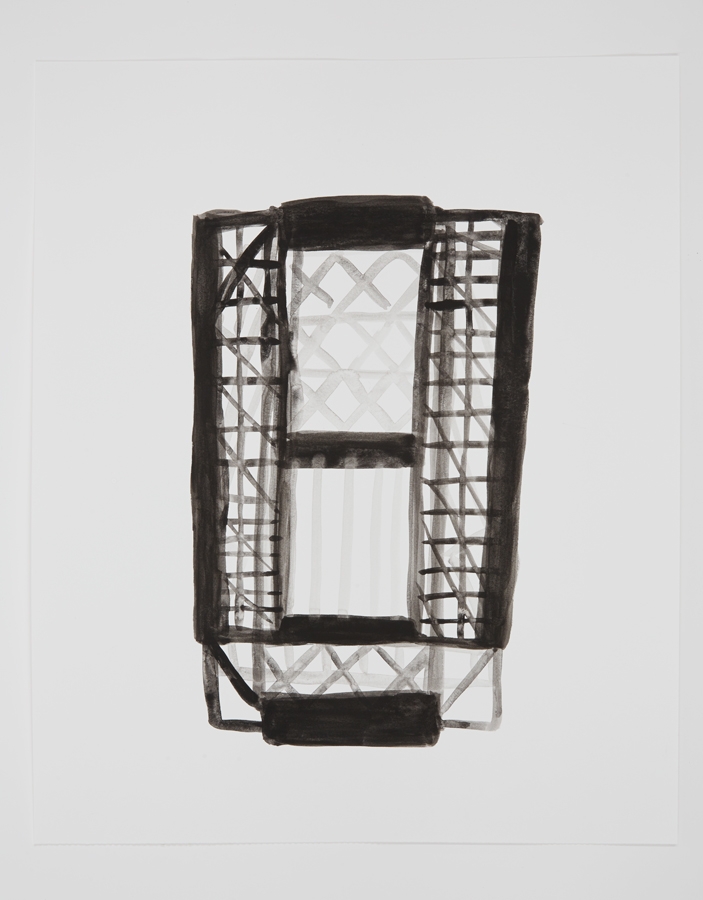The first thought that strikes me on encountering Susan Hefuna’s two tall rectangular sculptures in the centre of the gallery (Untitled, all works 2014), each comprising three vertically stacked crates, crudely made from strips of palm wood tied together with string, is that they have no doors. Small square windowlike gaps, yes, but definitely no doors. This concerns me, as I’m interpreting them as either stacked cages – for containing chickens or some other poor creatures – or as the skeletal infrastructure of a model for a prototype tower block. They may be based on both these things, but in actuality they’re neither; they’re one of the many manifestations of Hefuna’s ongoing interest, whether in sculpture, on paper or as movement in space, in the connecting formal structure of the grid.
Cairotraces is Hefuna’s first solo exhibition at Pi Artworks’ London gallery. She’s had two previous solo shows with Pi at their more established Istanbul space, and as such this exhibition functions as something of a showcase of signature-style works by the established German-Egyptian artist. Accompanying the wood sculptures are five smaller, unique black bronzes, each titled Building, plus two series of drawings. The freestanding bronzes might also reference a cage or dwelling, but in place of geometric uniformity the angles in these are jagged and irregular, creating latticelike structures that suggest something crushed or distorted, and which may be solid in terms of material but have no outside, inside or centre.
The series of drawings is where all this ambiguity and ambivalence between solidity and hollowness, structural conformity and abstract architecture come together best. Displayed as a panel, nine framed drawings of loosely sketched geometric shapes are filled in with equally loose crosshatched brushstrokes in varying densities of black watercolour. All titled Cairotrace, they allude not only to grids, armatures or architectural plans but also to maps, screens and grills, all of which may function equally as protection and prevention. In the second series of nine drawings (like the bronzes, each titled Building), Hefuna renders these structures in both ink and graphite on separate sheets of translucent tracing paper and layers them together. There is an added dimension and tension to these in the way that the paper buckles and crinkles with the wetness of the ink.
The most often mentioned visual reference in writings about Hefuna’s work is that of the mashrabiya – the decorative screen or grille used for privacy in traditional Egyptian houses. That, and the artist’s dual cultural heritage, particularly in relation to different urban architectures. While these themes clearly resonate, what stops these, and all Hefuna’s works, from being allied too closely to either cool minimal abstraction or social comment is the competent but nevertheless wobbly irregularity of the lines and forms, a reminder not only of the artist’s hand but also of human vulnerability.
This article was first published in the January & February 2015 issue.
